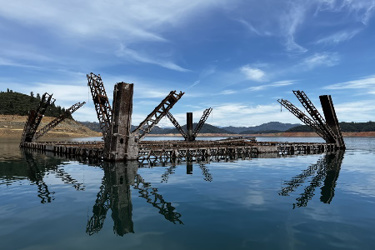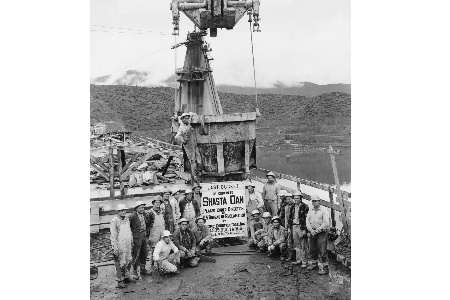Shasta Dam Construction Relic Emerges Again In Dry Year

When Shasta Reservoir levels drop 90 feet down from the top of the dam remnants of the "head tower,” a structure used during the dam’s construction in the early 1940s, becomes visible. To locals and water wonks alike, it’s a reminder that it’s going to be another dry year.
“I have seen the foot of the head tower rise out of the water many times over the 21 years I have worked here,” said Tami Corn, a Bureau of Reclamation Project Coordination Specialist at Shasta Dam. “It’s one of the first construction-era landmarks to pop up during extremely dry years.”

Construction of Northern California’s Shasta Dam began in 1937 and was completed in 1945. A system of steel cableway towers was erected to carry the concrete-pouring buckets used to place concrete in the dam during construction.
The head tower stood 465 feet high from its foundation and 700 feet above the river. In order to generate power as soon as possible for World War II efforts, water began running through the generators in the power plant as the dam continued to be built with use of the head tower.

Boaters and swimmers must stay at least 1,000-feet away from the dam and not approach the head tower for safety and security reasons. One of the best views of this piece of history is from top of Shasta Dam, open from 6 a.m. to 10 p.m. daily.
“It’s an interesting site to see and brings out more visitors, but it also means water users are struggling downstream,” said Corn.
Click here for Shasta Dam fact sheet


Source: U.S. Bureau of Reclamation
